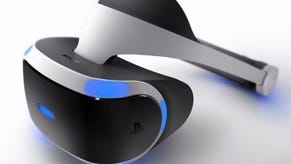Rez Infinite's surprise PC port tested
How well does Rez classic and the new Area X run across a range of hardware?
Since its release almost 16 years ago, Rez has not only stood the test of time but there's a good argument that it has actually improved with age. Through a combination of perfectly timed sound and rich visual design, Rez delivers an experience that's difficult to forget - and now, Rez Infinite is available on PC, in both standard form and with full VR support for both Vive and Oculus Rift.
At its core, Rez Infinite is comprised of two unique pieces: the original Rez with its enhanced visuals and Area X, a new stage built using Unreal Engine 4. This new level isn't especially lengthy but it's a stunning experience, offering a tasty morsel of what a proper sequel to the original game might look like.
As PC ports go, Rez Infinite checks most of the boxes: there's great support for keyboard, mouse, and gamepad along with arbitrary resolution support. Resolution scaling is available up to 250 per cent, MSAA is included for Rez Classic - and it all runs very smoothly even on relatively meagre hardware. Let's put it this way, on an old i5 3570K paired with a GTX 970, the game runs at full 4K with MSAA disabled (adding it causes some frame drops). AMD's Radeon R9 290X achieves the same feat, with the added bonus of 4x MSAA, bringing into line with the presentation seen on PS4 Pro.
This is a solid foundation for scalability across a range of hardware, depending on the resolution you choose. GTX 1080 Ti and higher (we tested on a Titan Xp) is able to deliver full 16K resolution with 2x MSAA. Another key takeaway here is that despite its age, Rez holds up very well and scales perfectly to high resolutions. Very high resolutions.
However, one issue we ran into with the PC conversion involves support for proper full-screen. Essentially, the game is locked into a double buffer v-sync configuration. Disabling v-sync has no effect and desktop notifications continue to appear during gameplay, suggesting we're locked into borderless full-screen here, regardless of your chosen settings.
Nevertheless, there are some nice additional goodies here. There are three texture settings, the highest of which features art with a resolution eight times that of the original game and this, in turn, is even sharper than the PS4 version. Texture filtering is also adjustable, though with the rather low requirements here, it should be possible to leave this cranked up.
The bottom line? Just about any gaming PC should be able to handle Rez classic well - but the new Unreal Engine 4-powered Area X sees system requirements rise significantly. The presentation is focused entirely on particle effects, swirling pixels dancing across a pitch-black canvas in time to the music, while players are finally offered a chance to break free from the on-rails confines of the original. It's a remarkable experience that is a sight to behold.
This more demanding portion of the package pushes GTX 970-level hardware pretty hard and can exhibit slowdown in 4K mode. The solution, of course, is to use the resolution scale setting to dial things back just a touch which improves things quickly. We settled on 70 per cent scale here, effectively an upscaled 2688x1512. Again, the old R9 290X fared better and 80 per cent scaling worked fine. GTX 1080 Ti-class hardware will power you to full 4K.


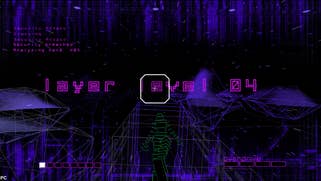
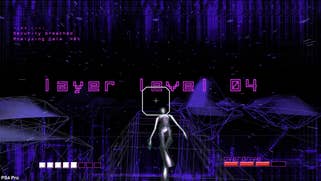
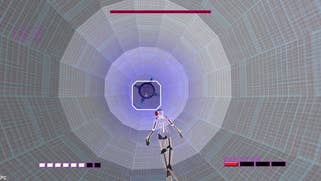
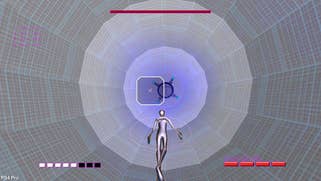


Based on our experience across low, mid-range and high-end PCs then it feels like both pieces of Rez Infinite are well optimised. Given its roots, it's not surprising, but it's nice to see that all of this was delivered without issue. Those roots are certainly fascinating to consider. When looking at Rez Infinite through the lens of time, it's interesting to reflect on how the game has evolved while still retaining its unique look.
It's likely that the first version conceived was the Dreamcast release, which hit the same day as the PlayStation 2 version in Japan back in late 2001. On Dreamcast, the game runs at 30 frames per second but supports 480p output and looks excellent as a result. The PlayStation 2 version retains the same presentation as the Dreamcast version but switches to an interlaced mode while doubling the frame-rate to 60 frames per second instead. This is how gamers first experienced Rez.
Years later in 2008, the super-talented conversionsmiths at HexaDrive helped develop a port of the game for Xbox 360. It runs at 720p with higher resolution textures, MSAA and improved audio. It was the definitive version of Rez for years, save for a few sound pitch bugs compared to the original.
That all changed in 2016 when Rez Infinite was announced and subsequently released for PlayStation 4. This delivers the full Rez experience with further enhanced visuals, with the PS4 Pro able to deliver a native 4K experience at 60 frames per second. Infinite also includes support for PSVR, a perfect addition to the game, while offering including Area X - which has to be unlocked on PS4 unlike the PC version, where everything is open from the off.

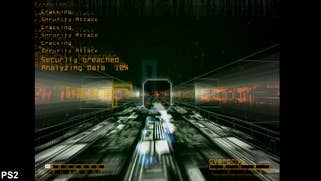

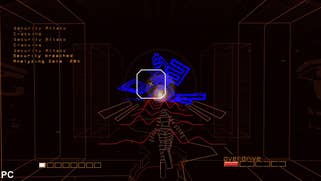

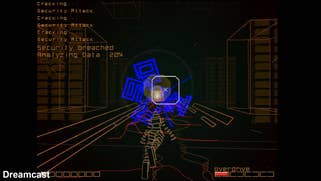



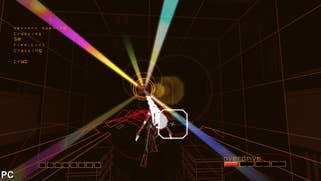

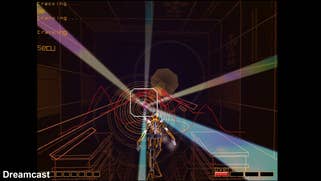
So how about VR then? Anyone that has played Rez Infinite using PSVR knows how immersive it can be and the PC version is no exception. The higher resolution headsets available on the PC allow for enhanced image quality and extra downsampling, resulting in a cleaner overall experience. Area X is the highlight here. Running at a native 90Hz, this mode feels absolutely incredible and offers improved visuals and fluidity over the PSVR original. The empty space and focus on particles also help avoid any motion sickness you might otherwise encounter. This is as good a Rez VR experience as you could hope for. The Oculus Touch also works much better than the PS Move controllers with greatly improved accurately. The same goes for the Vive wands, of course.
Unfortunately, classic Rez does not fare quite as well. The issue is that the game appears to be designed for 60 frames per second. We already failed to uncap the frame-rate but, in VR, it seems that the 60Hz gameplay is forced to run at each headset's native 90Hz. The result is a visible double-image effect and motion simply isn't as smooth as it should be as a result. It's still enjoyable, but the game's legacy code seems to present a problem when running at higher frame-rates. I found that classic Rez was more likely to induce motion sickness.
There are also issues with sound routing. When running in Oculus VR mode, the game automatically switches to the built-in headphones but, when you select Area X, it reverts to your default sound device. You'll have to change the default device to your VR headset within Windows in order to enjoy the game using the headphones. Still, even with this issue, if you have a VR headset, it's an amazing way to experience the game.
And experience it you should. While Rez has existed for almost 16 years now, this is the first time the game has been officially available on the PC and it's a mostly great port. While the lack of proper fullscreen support and an uncapped frame-rate are disappointing, these issues can be traced back to its age and reliance on timing - the music appears to be tied to the frame-rate and dropping below 60fps results in distortion. With this in mind, it's a good thing that system requirements are as slight as they are. Overall, this is a beautiful port of a truly classic game that still has the potential to amaze - we highly recommend a purchase.









